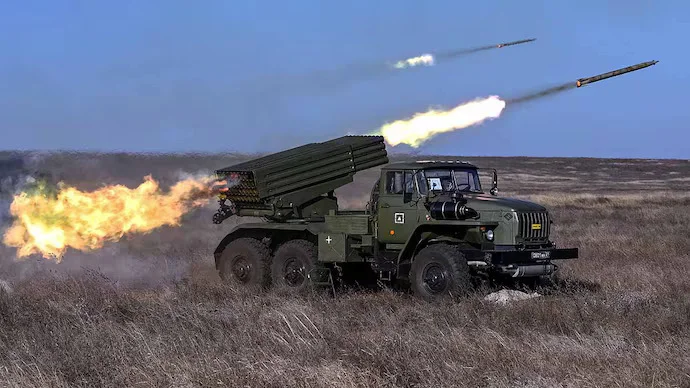India’s Akashteer air defence system has emerged as a critical technological breakthrough in national defence capabilities. Developed jointly by the Defence Research and Development Organisation (DRDO), Indian Space Research Organisation (ISRO), and Bharat Electronics Limited (BEL), Akashteer represents India’s first artificial intelligence-powered air defence shield designed to intercept drones, missiles, and loitering munitions in real-time. It has been described as India’s version of the Iron Dome, offering a robust response to evolving threats in the aerial domain.
Akashteer gained significant attention following its role in intercepting and neutralizing coordinated Pakistani drone and missile strikes along India’s western borders on the night of May 8–9, 2025. The attacks targeted 26 locations across Punjab, Rajasthan, and Jammu and Kashmir. Despite the scale of aggression, Akashteer successfully prevented any major damage or loss of life, highlighting its operational readiness and technological superiority.
What is Akashteer?
Akashteer is an indigenous air defence command and control system designed to provide integrated air surveillance and target engagement in hostile environments. It functions as a centralized, AI-based network that integrates multiple layers of radar, sensor, and communication systems to track and engage aerial threats. It is capable of real-time threat detection and interception using minimal human input. Unlike traditional air defence systems that depend on operator-triggered surface-to-air missiles or ground-based radar commands, Akashteer automates most critical functions through artificial intelligence and autonomous decision-making.
The system collects and processes massive amounts of data from a range of sensors and provides a unified air picture to military commanders, air defence units, and automated response systems. This level of integration enables seamless coordination between control rooms, radar installations, and ground-based air defence weapon platforms.
Role During Pakistan’s Aerial Attacks
On the intervening night of May 8 and 9, Pakistan launched multiple aerial threats against India using drones, loitering munitions, and possibly cruise missiles. Indian defence officials confirmed that Akashteer played a central role in neutralizing these threats. The system engaged targets in real-time and conducted autonomous countermeasures without requiring satellite input or foreign navigation support.
What makes Akashteer especially effective is its stealth capability. It does not rely on active radar signatures, making it extremely difficult for enemy forces to detect its operations. Instead, it uses passive tracking methods, AI-based flight path prediction, and rapid engagement protocols to intercept enemy drones before they reach Indian territory.
🔗 Also Read: Indian Fighter Jets Bomb Pakistan Air Bases »
Technology Stack and Capabilities
Akashteer integrates within India’s larger C4ISR framework—Command, Control, Communications, Computers, Intelligence, Surveillance, and Reconnaissance. It combines satellite surveillance, local radar networks, and the Indian Regional Navigation Satellite System (NAVIC) for coordination. The system operates in a completely self-contained network, allowing it to function even if external satellites are unavailable or jammed.
Among its core capabilities is the ability to control and guide autonomous drone swarms. Akashteer drones can adjust flight paths, select new targets, and coordinate strikes without real-time operator input. The system includes multiple mobile radar platforms such as 3D tactical radars, low-level lightweight radars, and the Akash missile battery. These are supported by vehicle-based launch systems that allow quick deployment and repositioning in combat zones.
Akashteer’s greatest strength lies in its automation. It collects airspace data, analyzes threats, and initiates counter-responses autonomously, significantly reducing reaction times. This allows Indian forces to act faster than traditional manned systems and prevents collateral damage through improved precision.
Comparison with Global Systems
Akashteer is often compared to Israel’s Iron Dome, the United States’ Patriot missile system, and Russia’s S-400. However, Akashteer differs fundamentally in its architecture. It is the first combat-ready AI war-cloud built without foreign components. While systems like the Iron Dome are highly effective against rockets and missiles, they rely heavily on centralized command decisions and expensive interceptors. Akashteer’s AI architecture allows it to operate independently, make rapid decisions, and manage resources more efficiently.
Moreover, India is the first non-Western country to successfully field an integrated system that combines AI coordination, drone swarm command, indigenous satellite navigation, and mobile deployment in a single operational platform.
🔗 Also Read: Indus Waters Treaty Suspension: Pakistan ‘Pleads’ With India to Reconsider »
Battlefield Mobility and Deployment
One of Akashteer’s unique advantages is its mobility. Being vehicle-mounted, the system can be deployed rapidly in hostile terrain and can continuously monitor low-level airspace. It can be repositioned within hours, enabling flexible defence against surprise attacks. Akashteer is also designed to minimize friendly fire by automatically identifying allied aircraft and deconflicting air defence responses. This is critical in active conflict zones where both friendly and hostile aircraft may be operating simultaneously.
The system is capable of functioning under extreme weather conditions and electronic warfare scenarios. It does not depend on continuous operator oversight and can operate in “auto-engage” mode for extended periods. This makes it ideal for front-line deployments in contested regions.

Strategic Impact and Future Development
Akashteer’s success during the recent Indo-Pak conflict has redefined India’s defence doctrine in terms of airspace security. The system proved its capability in defeating advanced Pakistani drones and missiles, and its autonomous decision-making effectively neutralized threats without endangering civilian populations or infrastructure. It has also highlighted India’s ability to develop cutting-edge military technologies independently, without reliance on imported platforms.
Going forward, Akashteer is expected to be integrated with other Indian missile systems such as QRSAM (Quick Reaction Surface-to-Air Missile), MR-SAM (Medium Range SAM), and the upcoming XRSAM. The Ministry of Defence is also planning to expand Akashteer’s deployment to all key border zones, naval air bases, and strategic nuclear sites. Additionally, its AI core is expected to be upgraded for swarm intelligence coordination, deep learning-based target recognition, and real-time predictive threat mapping.
Conclusion
The Akashteer air defence system marks a significant milestone in India’s journey towards defence self-reliance and technological leadership. With its indigenous AI-powered architecture, real-time autonomous operation, and battlefield mobility, Akashteer has proven to be one of the most advanced and resilient air defence systems in the world. By successfully thwarting Pakistani drone and missile attacks, it has demonstrated India’s readiness for modern warfare and its ability to protect national sovereignty through innovation and precision.
As India continues to face evolving aerial threats, Akashteer stands as a symbol of national capability and strategic foresight. It is not just a military system; it is a leap into the future of autonomous defence.

